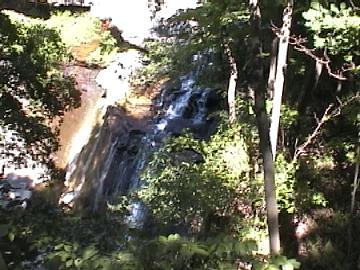
|
|
7 July, 2002
Local Geology
The dominant feature that affects Northeastern Ohio is Lake Erie, of course. However, Lake Erie is a relatively recent artifact left behind by large continental glaciers that covered this area on and off for the last two million years. Most of the rivers in the area flow south, but prior to glaciation, this was not the case. Although, major rivers like the Cuyahoga occupy the same valleys, they flow in an opposite direction to the one they did prior to glaciation.
Most of this area is underlain by sediments ranging from Devonian to Pennsylvanian age (450-320 Ma). Some of the largest fish fossils ever discovered are of a shark eater named Dunkleosteus and are found very close to Cleveland.
Northeastern Ohio sat on the flanks of the Appalachians when they were uplifted after North America collided with North Africa. During the Pennsylvanian, the Appalachians probably resembled the modern Himalayas. Large rivers would have flowed out of these tall mountains and the deposited the shale, sandstone, and conglomerate that underlie most of the topography. Brandywine falls in Cuyahoga National Park are formed from the undercutting of the softer shale underneath the overlying conglomerate. The geology of this area tells a story of time when Northeastern Ohio looked very different than it does today.

Brandywine Falls

Dunkleosteus
Contact the TEA in the field at
.
If you cannot connect through your browser, copy the
TEA's e-mail address in the "To:" line of
your favorite e-mail package.
|
